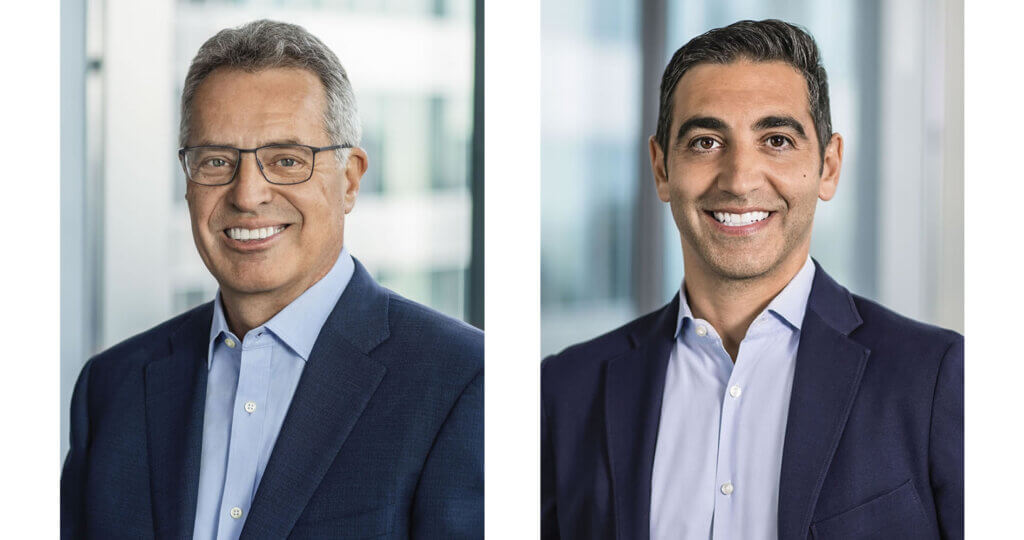By Bill Nygren, Portfolio Manager
The reports of my death are greatly exaggerated.
– Mark Twain
Another rough year for mutual funds
In 2022, investors pulled $960 billion from mutual funds, making it the fund industry’s worst year. While the megatrends of moving to index funds and ETFs continued, redemptions also included movement to cash after the market fell. So, with the stock market so strong in 2023, did the 2022 outflows reverse? Nope. In fact, by November, mutual fund outflows reached $430 billion, making 2023 the industry’s second-worst year. The financial press pronounced actively managed mutual funds dead. But much like Mark Twain’s response to reading his obituary, we think reports of the death of mutual funds are greatly exaggerated. I don’t think there is a structural problem, rather mutual funds have suffered from not meeting shareholder needs, and that is why Oakmark does things differently.
At Oakmark, we are long-term investors. We attempt to identify growing businesses that are managed to benefit their shareholders. We will purchase stock in those businesses only when priced substantially below our estimate of intrinsic value. After purchase, we patiently wait for the gap between stock price and intrinsic value to close.
Oakmark differs from the industry
I’ve written previously about some of the ways we have differentiated Oakmark to avoid the mutual fund industry’s self-inflicted problems.
- Brand that has meaning – Most fund companies try to be all things to all investors. We want Oakmark to be synonymous with value investing.
- Educational shareholder communication – Many funds communicate semi-annually with the required summary of best- and worst-performing stocks. We communicate more information more frequently because we believe that shareholders who understand our investment philosophy will be more likely to maintain their investments through market cycles.
- Definition of risk – The industry has allowed index funds to define risk as deviation from the index rather than loss of capital. This gives a pass to risky indexes that are concentrated in mega-cap companies in one industry and allows funds with less extreme performance to be called risky. Despite high tracking error, using definitions of risk more relevant to long-term investors, such as magnitude and duration of declines, the Oakmark Fund looks less risky than the S&P 500.
- Number of holdings – Much of the industry views diversification as job security. At Oakmark, our primary skill is stock selection, and we want to avoid diversifying so broadly that we dilute that skill. The Oakmark Fund currently holds 57 stocks. The median large-cap fund has 83, nearly 50% more than we do, and the average fund has 256 stocks, more than four times Oakmark. It’s hard to perform differently from the market if you own the market.
- Tax awareness – Many funds focus only on pre-tax returns and have unfortunately tarred the entire industry with the tax-inefficient label. At Oakmark, we take every opportunity to reduce our taxable distributions when we believe those actions don’t harm our tax-free shareholders. The Oakmark Fund and Oakmark Select Fund rank highly on Morningstar’s after-tax returns, can be more tax-efficient than separate accounts and compare favorably to many ETFs.
- Personal investment – Many portfolio managers started investing in their mutual funds only after Morningstar began disclosing managers’ personal investment stakes. At Oakmark, we started our funds because our investment team wanted to invest side-by-side with our clients. Our managers’ investments in Oakmark Funds are their largest personal investments. Every year, we disclose the total dollar amount our employees and fund directors have invested in our Funds. We believe it is significant that this amount is both large and growing.
Though each of these items is important, perhaps the biggest problem is that actively managed funds haven’t been all that active.
Are your active funds really active?
We often hear that it’s pointless to invest in large-cap mutual funds because it is an expensive way to get the same exposure that is free in index funds. So, let’s look at measuring whether a large-cap fund is just a closet index fund.
Imagine an index split equally between two stocks, each with a 50% weight. A portfolio manager benchmarked against that index might decide ABC looks superior to XYZ and overweight ABC. Not wanting tracking error to get too high (the amount the fund return differs from the index), that manager decides to increase ABC to 120% of the index weighting, resulting in a portfolio 60% in ABC and only 40% in XYZ.
“Active share” is a metric that quantifies the difference between a portfolio and its benchmark index. In our simplified example, the manager moved 10% of the portfolio from XYZ to ABC and, thus, has an active share of 10%. Active share becomes even more meaningful when viewed alongside fund expenses. Imagine an investor who is attracted to our hypothetical fund because it has low expenses—let’s say, 0.25%. The investor could replicate 90% of this fund by buying an index fund, basically for free. But by investing in the hypothetical fund, the investor is effectively paying 0.25% only for the extra 10% in ABC. Applying the entire expense to the active share shows a sky-high 2.5% active expense ratio. This simplified example illustrates why we’ve long argued that if active managers aren’t truly active, investors are better off replacing them with index funds.
You can apply this to your investments by comparing your mutual fund expense ratios to their active shares. The average large-cap fund has an expense ratio of 1.10%, somewhat higher than the Oakmark Fund’s 0.89%. The gap in expenses grows when applied only to the active part of the portfolio. The average large-cap fund has an active share of 60%, meaning that 40% of the fund could be replaced by a no-cost index fund. Attributing the 1.10% expense to only the active 60% produces an active expense ratio of 1.79%. Oakmark and Oakmark Select rarely overlap much with the S&P 500. The Oakmark Fund’s active share is 84% and Oakmark Select’s is 93%. Applying expenses to only the active share, Oakmark has an active expense ratio of 1.05% and Oakmark Select, 1.06%, both less than 60% of the average large-cap active expense ratio.
| Average # of Stocks | Avg Active Share | Avg Expense Ratio | Ave Active Fee | |
|---|---|---|---|---|
| All U.S. Large-Cap Funds | 256 | 60% | 1.10% | 1.79% |
| U.S. Fund Large Value | 148 | 77% | 1.17% | 1.49% |
| U.S. Fund Large Blend | 462 | 53% | 0.98% | 2.03% |
| U.S. Fund Large Growth | 135 | 64% | 1.17% | 1.81% |
| ACTIVE SHARE | ||||
| Under 20% | 1489 | 12% | 0.23% | 2.43% |
| Between 20 and 50% | 637 | 40% | 0.68% | 1.83% |
| Between 50 and 80% | 137 | 65% | 1.18% | 1.83% |
| Above 80% | 62 | 87% | 1.33% | 1.52% |
| Oakmark Fund | 61 | 84% | 0.89% | 1.05% |
| Oakmark Select Fund | 21 | 93% | 0.98% | 1.06% |
Source: Morningstar as of 12/19/23
Funds with active share under 20% appear to be inexpensive, with expense ratios averaging only 0.23%. But that is an illusion. Their active shares average less than 11%, making their active fee 2.43%, more than twice Oakmark and Oakmark Select’s. Note that blend funds also appear cheaper, with expense ratios 19 basis points less than growth or value. But blend funds also have lower active share, meaning a much higher active fee, over 2%.
It is also interesting to compare large-cap growth and large-cap value funds. Both have average expense ratios of 1.17%. However, because most growth managers own the same mega-cap growth stocks that dominate the S&P 500, they overlap more with the S&P 500. The average large-cap growth fund has an active share of 64%, making its average active expense ratio 1.81%. Large-cap value funds have 20% higher active share, making their active expense only 1.49%. I don’t think investors realize that growth funds are more likely to charge higher fees for closet indexing.
Passive investing has sharply reduced investor expenses, and the mutual fund industry has been slow to adapt. But the problem has nothing to do with mutual funds having a disadvantaged structure. It simply isn’t. And that’s why we think the mutual fund industry is far from dead. But, of course, being active is no guarantee of outperformance. It just creates the opportunity to outperform after expenses. We were very pleased when Barron’s1 recently cited both Oakmark and Oakmark Select as high-performing funds with high active share. And that’s why we have the majority of our personal assets invested in our own funds.
Thank you, Clyde!
Forty-one years ago, I got a phone call from my former investments professor at the University of Wisconsin. He said, “You’re going to get a call from an alum you don’t know, Clyde McGregor, who works at a Chicago firm you’ve never heard of, Harris Associates. You should take the job.” He hung up, and Clyde called seconds later.
It has been a pleasure and education working with Clyde for the past 40 years. Clyde is best known for his key role in launching the Oakmark Equity and Income Fund in 1995 and remaining a co-manager through year-end 2023. Shareholders benefitted greatly from Clyde’s 28 years of stewardship, earning 12 times their initial capital, compared to 6 times in an average mutual fund that invests in both stocks and bonds. Importantly, Clyde crafted an exemplary succession plan, working for several years with Colin, Adam, Mike and Alex to ensure that shareholders would be in strong hands after he left.
Among Clyde’s many great attributes is his strong work ethic. I consider myself an early riser, but I can count on one hand the number of days I beat him to the office. True to form, Clyde was at his desk taking care of clients on December 29, the last trading day of the year! And, appropriately, the Oakmark Equity and Income Fund hit a new all-time high NAV in the final week of 2023, meaning that all shareholders have made money on their investment, something that cannot be said for most balanced funds. Talk about going out on top!
Clyde, thanks for everything, and here’s wishing you a retirement that is as amazing as your career.
OPINION PIECE. PLEASE SEE ENDNOTES FOR IMPORTANT DISCLOSURES.
1Kapadia, Reshma. Don’t Get Caught with Your Investments on Autopilot. Consider These 9 Actively Managed Funds. Barron’s, 11 Dec. 2023, https://www.barrons.com/articles/active-large-cap-funds-e8d41cc3.
The information, data, analyses, and opinions presented herein (including current investment themes, the portfolio managers’ research and investment process, and portfolio characteristics) are for informational purposes only and represent the investments and views of the portfolio managers and Harris Associates L.P. as of the date written and are subject to change and may change based on market and other conditions and without notice. This content is not a recommendation of or an offer to buy or sell a security and is not warranted to be correct, complete or accurate.
Certain comments herein are based on current expectations and are considered “forward-looking statements.” These forward looking statements reflect assumptions and analyses made by the portfolio managers and Harris Associates L.P. based on their experience and perception of historical trends, current conditions, expected future developments, and other factors they believe are relevant. Actual future results are subject to a number of investment and other risks and may prove to be different from expectations. Readers are cautioned not to place undue reliance on the forward-looking statements.
Active Share measures the percentage of an equity portfolio that differs from its benchmark. It is calculated using the sum of the absolute value of the differences between the equity weights of the securities in a portfolio and the weights of securities in the portfolio’s benchmark, divided by two. A portfolio identical to its benchmark would have an active share of 0%, whereas the more the portfolio diverges from its benchmark, the larger the active share (maximum = 100%).
NAV stands for Net Asset Value. NAV is the dollar value of a single mutual fund share, based on the value of the underlying assets of the fund minus its liabilities divided by the number of shares outstanding.
The S&P 500 Total Return Index is a float-adjusted, capitalization-weighted index of 500 U.S. large-capitalization stocks representing all major industries. It is a widely recognized index of broad, U.S. equity market performance. Returns reflect the reinvestment of dividends. This index is unmanaged and investors cannot invest directly in this index.
The Oakmark Funds’ portfolios tend to be invested in a relatively small number of stocks. As a result, the appreciation or depreciation of any one security held by the Fund will have a greater impact on the Fund’s net asset value than it would if the Fund invested in a larger number of securities. Although that strategy has the potential to generate attractive returns over time, it also increases the Fund’s volatility.
Because the Oakmark Select Fund and Oakmark Global Select Fund are non-diversified, the performance of each holding will have a greater impact on the fund’s total return, and may make the fund’s returns more volatile than a more diversified fund.
Oakmark Select Fund: The stocks of medium-sized companies tend to be more volatile than those of large companies and have underperformed the stocks of small and large companies during some periods.
All information provided is as of 12/31/2023 unless otherwise specified.






